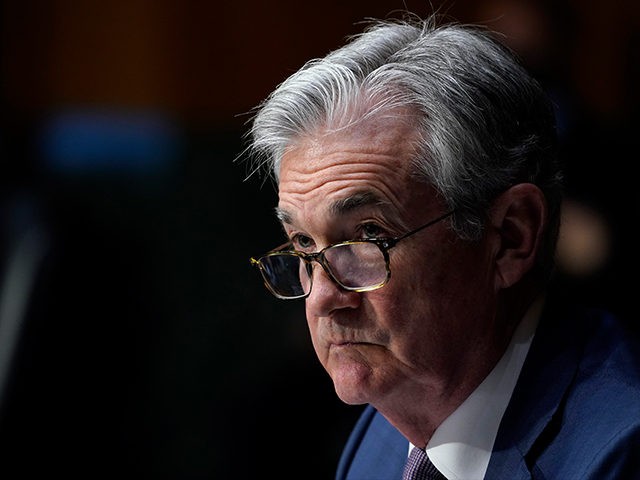Federal Reserve officials concluded at their meeting last month that their battle to fight inflation would require deliberately slowing economic growth through restrictive levels of interest rates.
The Fed on Wednesday released the minutes of the Federal Open Market Committee’s June meeting. Officials at the meeting voted to raise the Fed’s target rate by three-quarters of a percentage point, a bigger move than the half point hike a month earlier and the largest increase at a single meeting since November 1994.
The minutes show that Fed officials anticipated another hike of 50 or 75 basis points would be appropriate at the meeting scheduled to begin on July 26th.
The minutes note that the “economic outlook warranted moving to a restrictive stance of policy, and they recognized the possibility that an even more restrictive stance could be appropriate if elevated inflation pressures were to persist.”
Up until a few days before the June meeting, Fed officials had been signaling with unusual clarity that they planned another 50 basis point hike. That shifted rapidly after the Consumer Price Index inflation report for May showed that prices rose 8.6 percent, the most in over 40 years.
“The near-term inflation outlook had deteriorated since the time of the May meeting,” the minutes said. “Participants were concerned that the May CPI release indicated that inflation pressures had yet to show signs of abating, and a number of them saw it as solidifying the view that inflation would be more persistent than they had previously anticipated.”
The minutes also show that Fed officials view fighting inflation in egalitarian or progressive terms, believing that inflation hurts low and moderate income Americans.
“They commented on the hardship caused by elevated inflation, with low- and moderate-income households especially affected. These households had to spend more of their budgets on essentials such as food, energy, and housing and were less able to bear the rapidly rising costs of these essentials,” the minutes said.
That’s a stark contrast to the traditional view in which progressives tended to take a “dovish” view on inflation, believing that higher unemployment hurts more than rising prices. Fed chair Jerome Powell and other officials have stated the belief that persistently high inflation actually would impede their ability to achieve maximum employment over the longterm.
On the same day that the Department of Labor released the CPI report for May, the mid-June preliminary results from the University of Michigan’s survey of consumers showed expectations for inflation over the year ahead stood at 5.4 percent, a bit above the May level and matching what was recorded in March and April. The expectation for inflation over the next five to 10 years jumped from three percent to 3.3 percent.
Those readings, especially the jump in longer-run expectations, worried Fed officials. The central bank’s economists and officials believe that inflation expectations play a crucial role in inflation outcomes, effectively becoming a self-fulfilling prophecy. Not all economists agree with the expectations theory of inflation but it nonetheless plays a role in Fed policy making, with Fed officials keenly attuned to keeping inflation expectations “anchored” to a level consistent with their goals of averaging two percent inflation over time.
The minutes noted that “many participants raised the concern that longer-run inflation expectations could be beginning to drift up to levels inconsistent with the 2 percent objective. These participants noted that, if inflation expectations were to become unanchored, it would be more costly to bring inflation back down to the Committee’s objective.”
“In their discussion of risks, participants emphasized that they were highly attentive to inflation risks and were closely monitoring developments regarding both inflation and inflation expectations. Most agreed that risks to inflation were skewed to the upside,” the minutes said.
The end of June report from the University of Michigan, issued weeks after the Fed’s meeting, tempered the inflation expectations reading, lowering the one-year rate to 5.3 percent and the longer-run rate to 3.1 percent.
Financial markets seem convinced that the Fed is determined to raise rates at least for the remainder of this year and the start of next year. The yield on two year Treasuries rose to 2.975 percent, a big move from yesterday’s closing yield of 2.816 percent. The yield on the 10 year Treasury, however, moved upon by a smaller amount to 2.921, leaving the yield curve inverted.

COMMENTS
Please let us know if you're having issues with commenting.